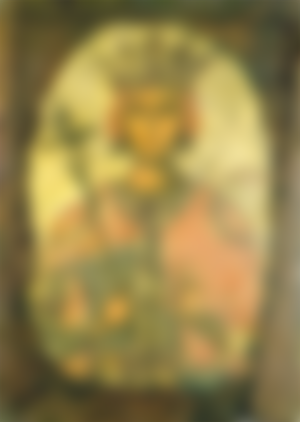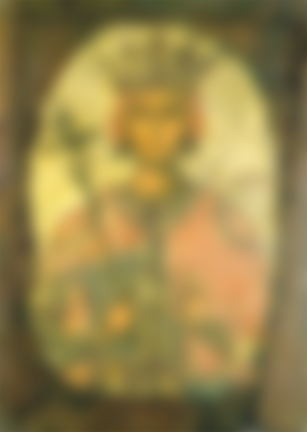Pachomios & the Origin of Christian Monasticism
Christian monasticism originated in Egypt in the 320s, and its founding is attributed to Pachomios (292-346 AD) from Thebe (today's Luxor). When he died, he was abbot over 8-11 monasteries (various sources state different numbers).
Pachomios wrote the first Christian convent rule, which forms the basis for all the different convent rules that emerged when the monastic system branched over time. He later became a saint, declared to be one of the "Desert Fathers".

Before Pachomios, there were desert hermites, of which the best known is Antonius of Egypt. They were monks, but lived alone. Monks (or nuns) living in a community is called cenobitic monasticism, and that is what we normally mean by “monastery”. Pachomios founded the first Cenobitic monastery in Tabennisi, on an island in the Nile, around 320 AD.
In literature, Sanit Pachomios is sometimes called Abba Pachomios, Pakhomius, Pakhom, Pakhome or Pakhomius the Great.
The Monastery of Pachomios is gone. The oldest still existing Christian monastery is the Monastery of Saint Catherine on the Sinai Peninsula.
The Monastery of Saint Catherine
The Monastery of Saint Catherine was founded in 337 by Constantin the Great's mother, Empress Helena, but was not built until between 548 and 565 - under Emperor Justinian. According to legend, the monastery was built on the place where God had spoken to Moses from a burning bush.
The Holy Catherine of Alexandria was killed during the persecution of Christians initiated by Emperor Maximianus. Her death is a story with many twists and turns, but she ended up praying to God that her body would never be found, and it has been said that angels brought it to Mount Sinai. On the hillside of the mountain, Egyptian Christians found remains of a body in the 8th century. They declared that it was the Holy Catherine, and the remains were taken to the already existing monastery, where a skull and a hand are still displayed at times.
Popularly, the monastery came to be called the Monastery of Saint Catherine, although that has never been its official name. It became the most important pilgrim goal in the extensive cult of the Holy Catherine.
In the monastery there is also the skeleton of the Holy Stephanus - another important figure in Christian history - and a host of valuable manuscripts and artifacts. Its library is a treasure for those interested in old scripts.
The Holy Catherine of Alexandria
But who was Catherine of Alexandria, who gave the monastery its name?

She is one of the most important saints in Christianity. A martyr, honoured as such by as well Orthodox as Roman Catholic Christians. Catherine of Alexandria is considered to be one of the four Virginian capitales; she considered herself married to Jesus Christ. Occasionally, her real existence has been questioned. There are no contemporary sources of her life, and some scholars believe she is a literary fiction. For that reason, she was absent from the Roman calendar between 1969 and 2002.
According to legend, Catherine was an Egyptian virgin, who was born about 282, and died around 305 AD. Sometimes it has been claimed that she was of royal birth, and she should have, among other things, converted 50 philosophers and some other distinguished people to Christianity. All of them suffered martyrdom for their faith. Catherine herself ended up in prison and would have been executed with stairs and wheels, from which a wonder rescued her. The wheel burst when she touched it. On the order of the Roman emperor, she became decapitated instead.

Catherine's most important attributes are sword and wheel - and she often appears as a motif in Christian art, depicted by such artists as Caravaggio, Rafael and Rubens.
(This article is based on material previously published in Meriondho Leo)
Copyright © 2018, 2020 Meleonymica/Mictorrani. All Rights Reserved.
All my articles about Egypt and Egyptology can be found here.
Interested in history, legends and myths, join my community History, Myths, Legends & Mysteries (be45).
You find all my writings on Read.Cash, sorted by topic, here.


